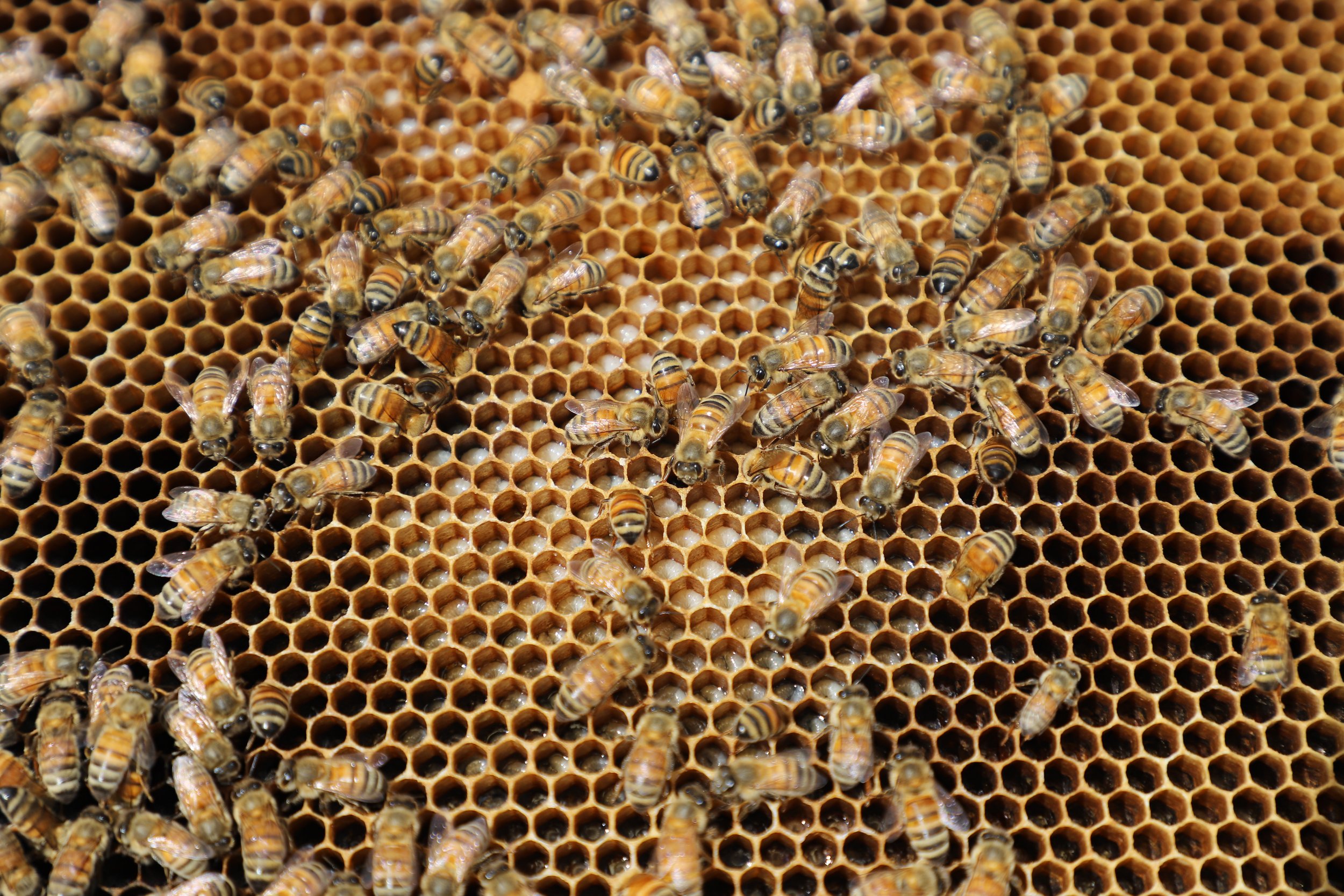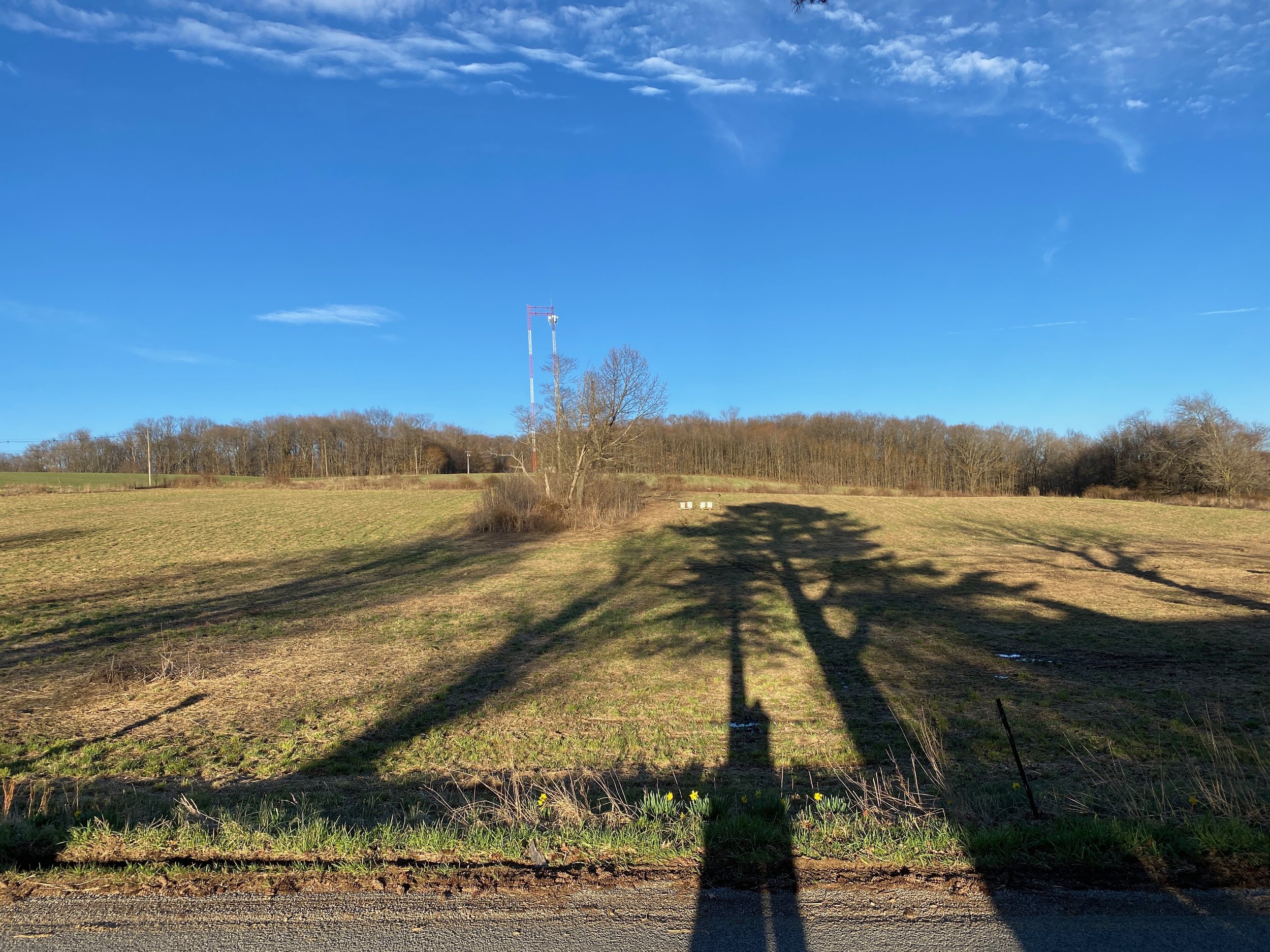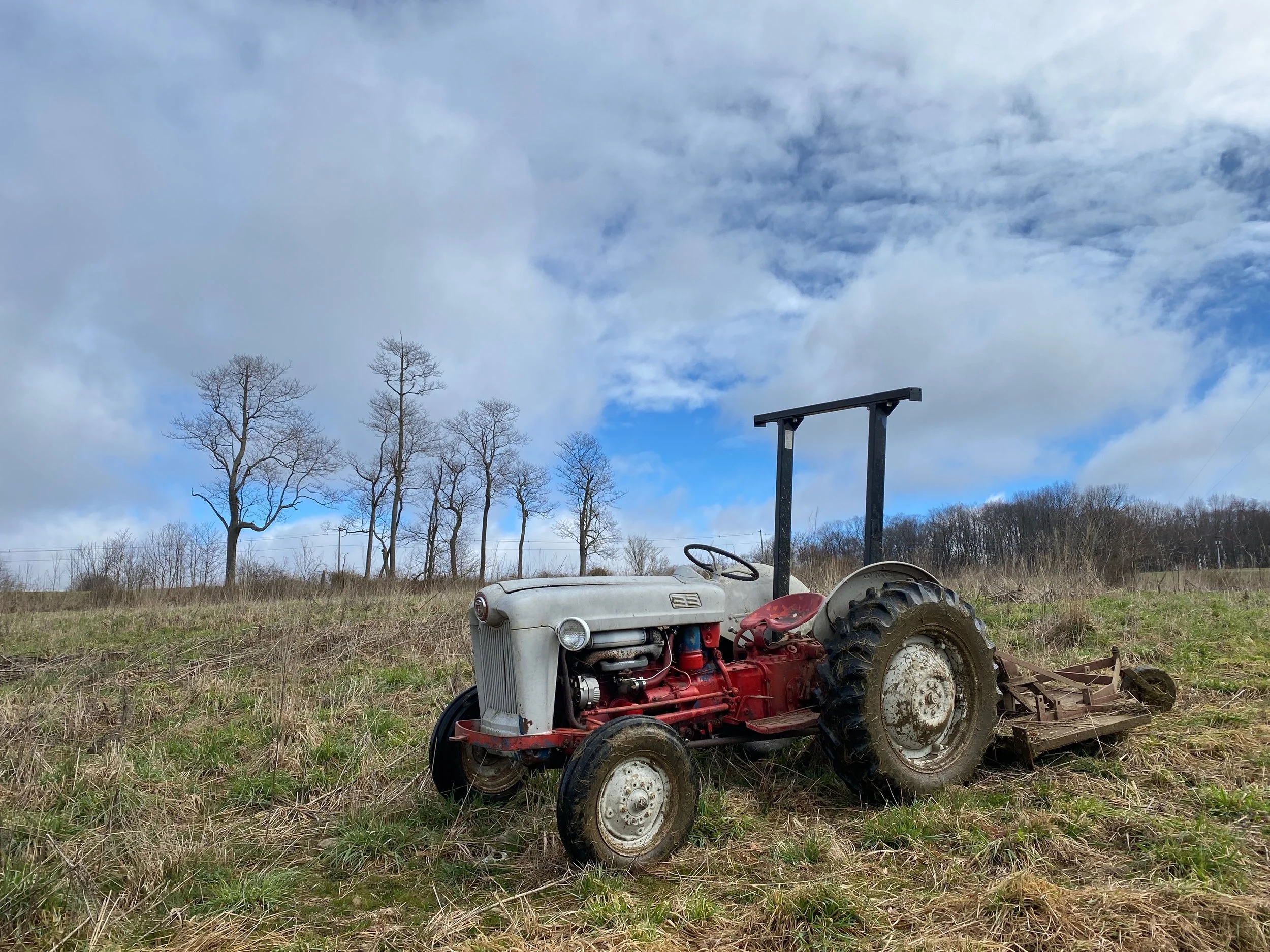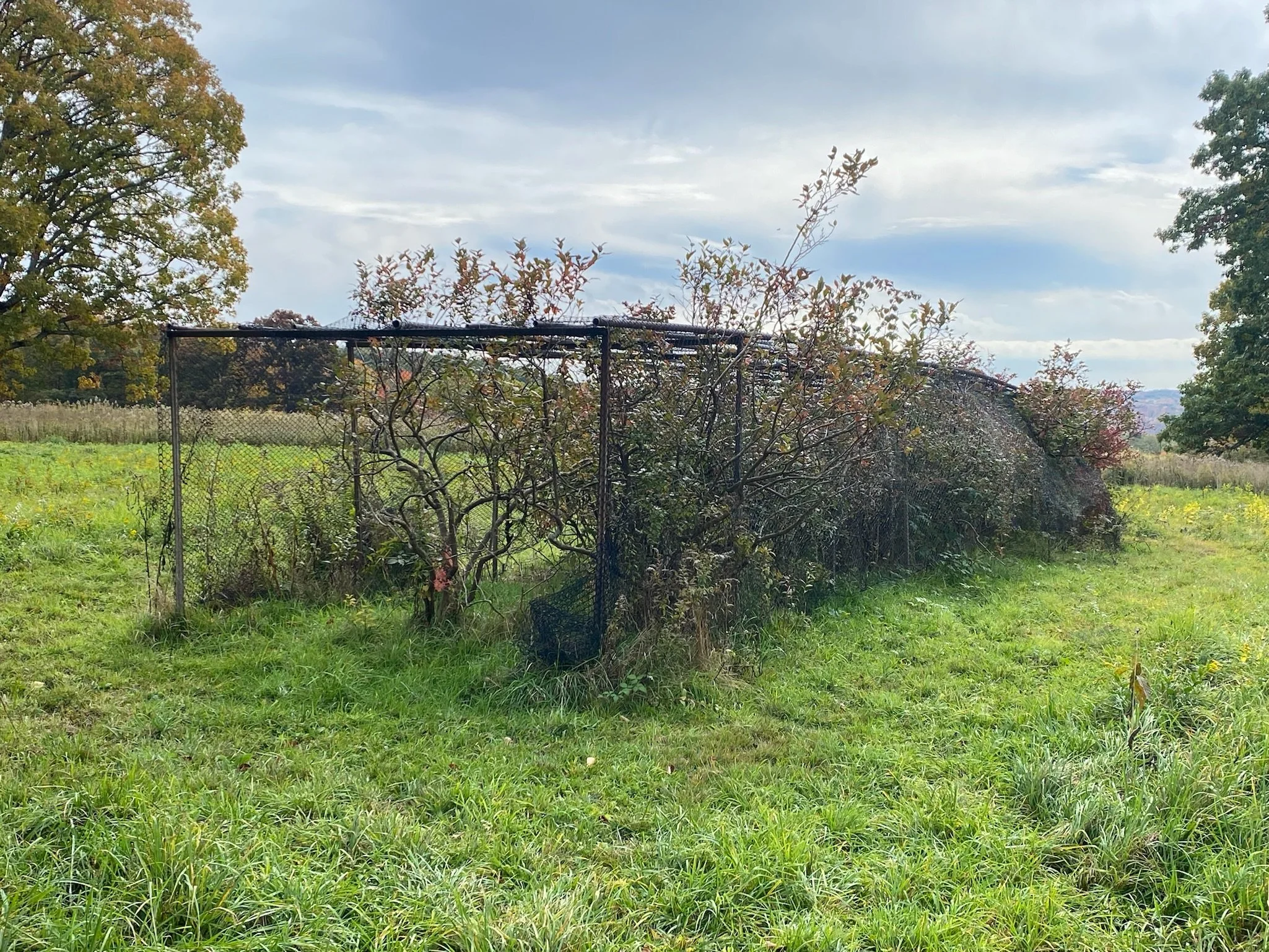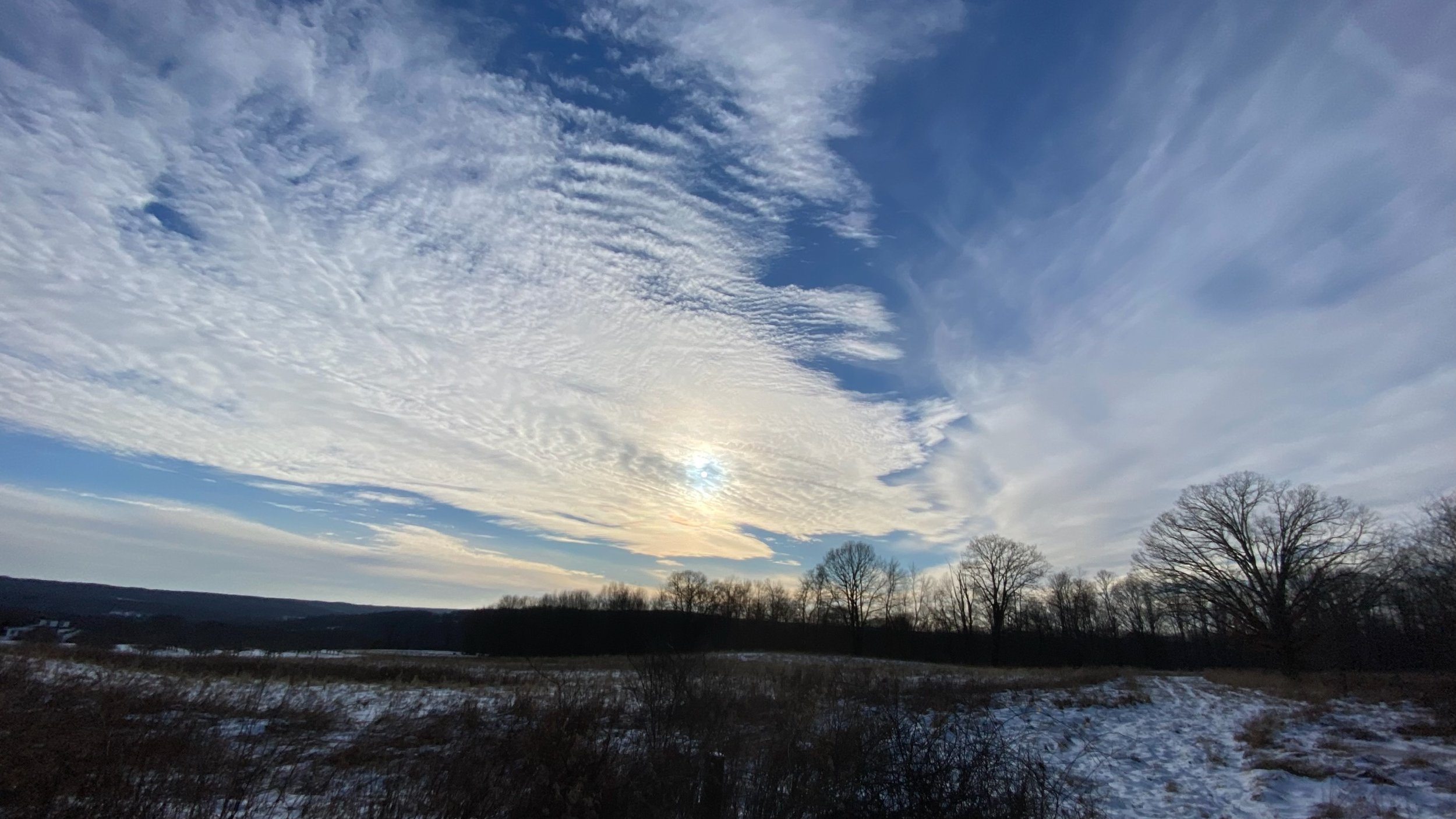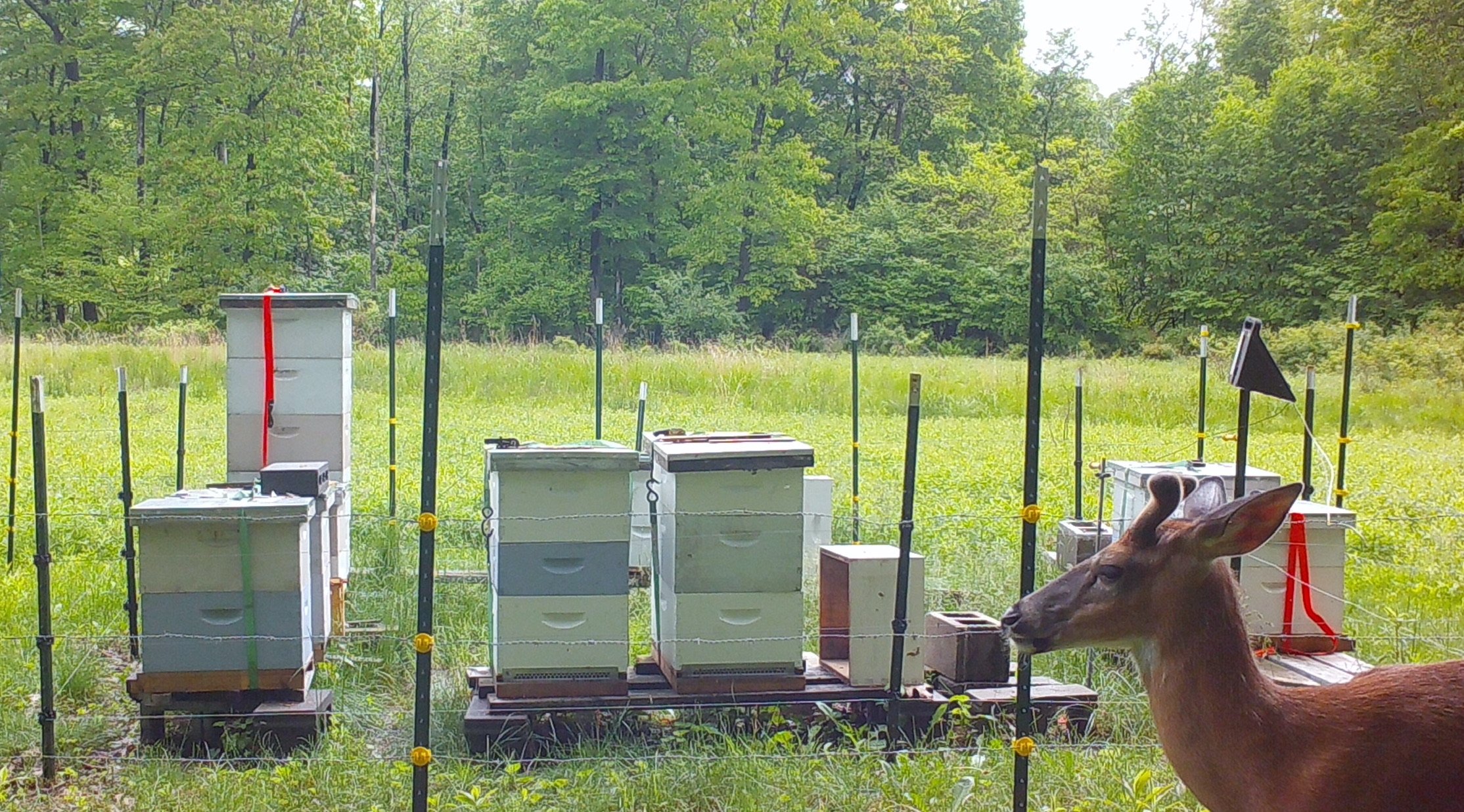We added four new honey bee colonies in June, sourced from New York state. I like to introduce new genetics now and again to the colonies to ensure a healthy apiary. Upon inspection of 9 of the hives on July 6th, two of them are producing enough honey that we reasonably expect to extract a few surplus gallons toward the end of the month.
Four New Beehives
It was one of those days (last week, April 7th) when I had to be in two different places and drove around 300 miles from the farm to Pittsburgh (to pick up four honeybee colonies at a friend’s house), from Pittsburgh to the farm (to move the bees to their new home), then back to Pittsburgh again (to be ready for the work-week). As a result, I did not take very good pictures but was happy to have gotten the field mowed back and the bees set up in a new location.
I envisioned getting the field mowed with the tractor and brush hog in just a few hours instead of the 8 hours over three days that it actually took. One of the neighbors confirmed that yes, even with a bigger and newer tractor, that is how long it takes. So - headphones in and music on, it was an enjoyable time in the field. I did a quick inspection on the new hives on Saturday and found them to be healthy, doing the things that honeybees do. The plan is to set up another set of hives near the blueberry bushes by June.
Spring Has Sprung!
The weather was nice enough for a few hours on Saturday to knock back some of the brush in the larger pasture which is pretty unruly and very muddy. I enjoy running the tractor and will always look for an excuse to take it out. It was in the shop for a few months for maintenance and installation of a roll-over bar, so I was especially eager to get it back. The brush-hog turned up some large rocks that migrated to the surface during winter. I conceded to the rain in the early afternoon and we spent the remainder of the day visiting friends… circling around to pick up the rocks on Sunday morning. I am hopeful the weather cooperates soon for me to make more progress.
We are planning to deploy four colonies of honey bees this week and I’ve been scouting out potential locations for the hives. Consensus is to place hives near the berries and also in the larger pasture where we plan to go with clover as a cover crop and add wildflowers (annuals and perennials) as we begin the process of soil regeneration.
New Location
We are excited to have closed on an old farmhouse in December 2023 with 80 acres of property that features tilled farmland, wooded acres, and fields of wildflowers including a cluster of blueberry bushes, blackberries, and raspberries. I plan to start introducing honey bees to the property in April 2024 and hope to have some of it to share by the time fall rolls around. In the meantime, we are enjoying wilfdlower honey that we extracted this fall - also available to purchase in the store.
Happy 2024!
It is that time of year for Goldenrod
Three of the empty honey supers went back on the beehives today after extracting 9 gallons of wildflower honey. The bees were busy as ever, their legs fat with pollen. The field of goldenrod is just starting to bloom and should continue for the next month.
Honey and lab testing
I recently sent samples of honey to a food testing lab in Germany to conduct chemical analysis of the honey for pollen content, pesticides, and chemicals. I started receiving reports today and the results indicate that the honey is 100% free of pesticides and chemicals.
July Honey Haul
A surprise haul of July wildflower honey yielded two and a half gallons. I mailed a sample to the lab in Germany for pollen analysis and origin, eager to see what are they results.
July Honey
Honey bee brood
Even the deer enjoy the beehives
Extracting the July honey
Honey bees on top of the hive frames
Spring Hive Check
Performed a brief inspection on Sunday after splitting a couple of the beehives the week before. Everyone is looking really good and I am thankful there has not been a bear attack since last year. The additional electric barbed wire fencing around the inner fence seems to be working.
One of the queens made an appearance and I happened to have my camera nearby.
As of today,the apiary is just about back up to the same quantity of beehives that I had at this time last year (following the multiple bear invasions). The hives from last year have been doing well and are strong enough to split into additional hives — plus I added 7 new colonies to the mix. My plan is to reinforce the electric fencing around the colonies this weekend with a second fence surrounding the one that is already there. Hope it will help keep the bears from invading.
Update on Hives Wiped Out by The Bear
I visited the location today where the bear demolished all of the hives to retrieve some of the concrete blocks and saw a few bees flying around. It seemed odd to me there was activity, considering it had been a couple of weeks since I moved the remaining hive out. When I took a closer look I saw around 50 bees sitting on two frames on the ground. It was one of the colonies leftover from the bear attack, still with their queen - and I was able to collect them up and put them in a hive! Those are some very resilient bees to sit and wait like that.
Once the two frames were safely in a hive box, the bees began signaling to the rest of the colony that the queen was inside and they spent the next half hour assembling into their new home. I moved them to the other site in the field of goldenrod.




